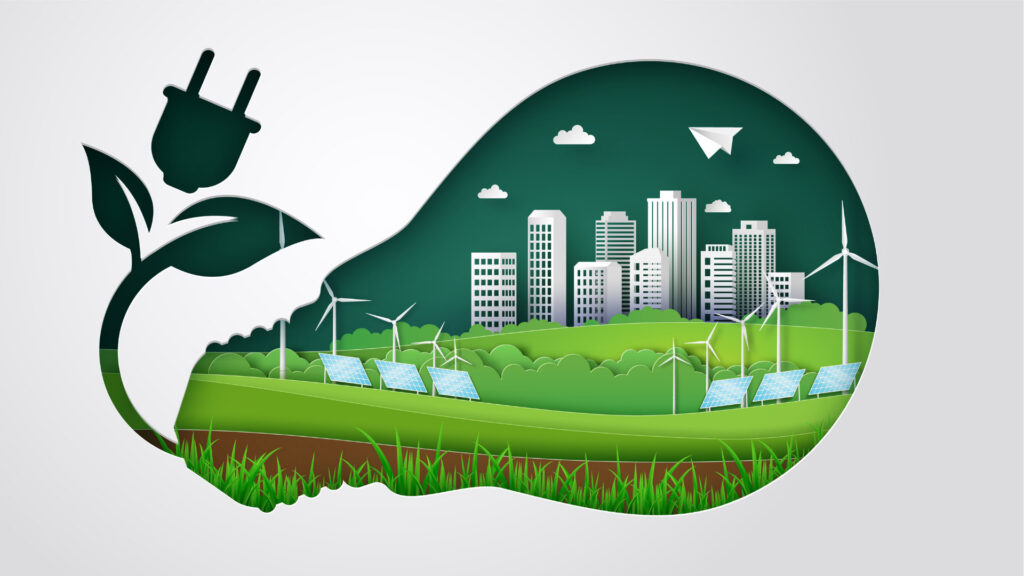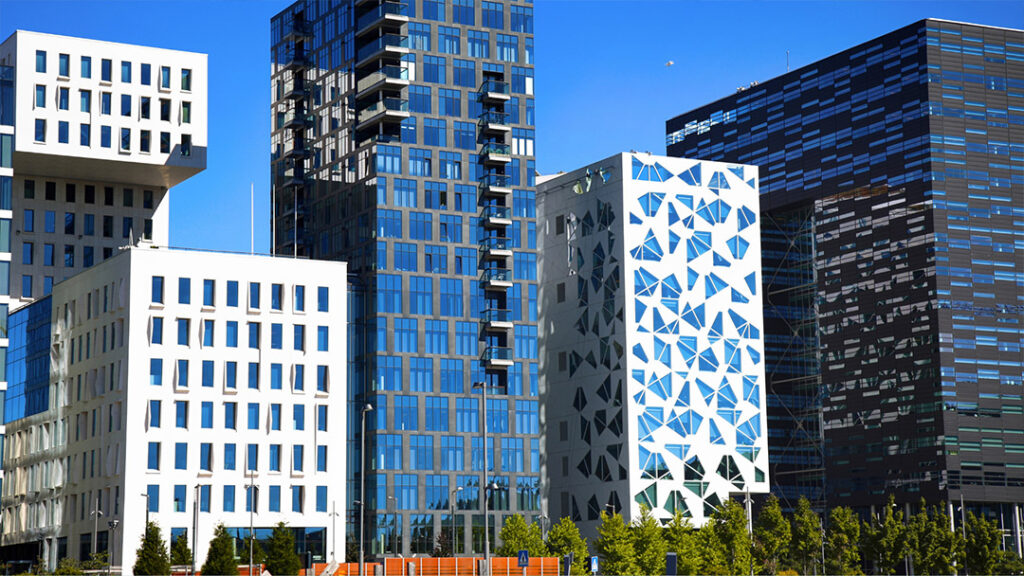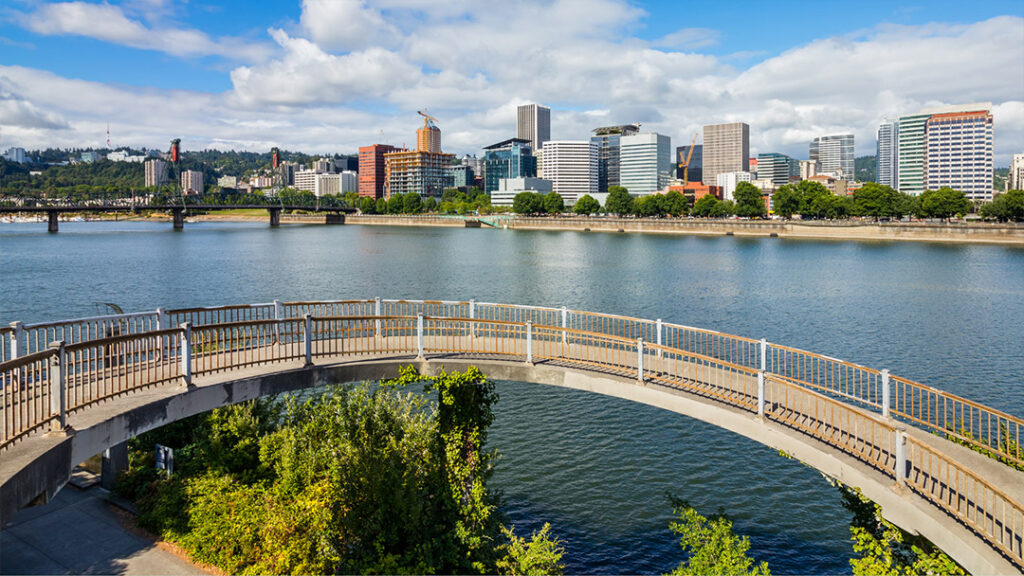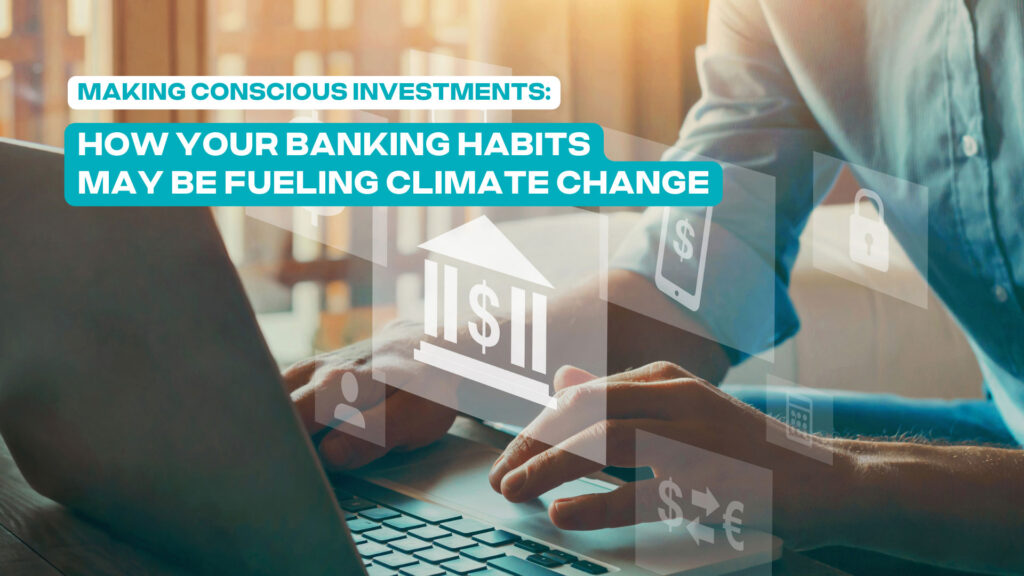As the world becomes increasingly urbanised, cities have emerged as major contributors to global carbon emissions. Our sprawling metropolises, with their dense populations, energy-intensive lifestyles, and reliance on fossil fuels, are generating a disproportionate and growing share of greenhouse gases, trapping heat in the atmosphere and accelerating climate change.
This growing urban carbon footprint poses a significant threat to our planet’s health and the well-being of its inhabitants unless alternative solutions to urbanisation are not found and implemented on a global scale.

The Impact of Urbanization on Carbon Emissions
Cities account for over 70% of global CO2 emissions, primarily due to energy consumption from buildings and transportation. The burning of fossil fuels to generate electricity and power vehicles releases significant amounts of carbon dioxide into the atmosphere. Additionally, industrial processes, waste disposal, and deforestation to make room for more neighbourhoods and city districts further contribute to urban emissions.
The Path Towards Sustainable Cities
In the face of this growing environmental challenge, the transition to sustainable cities has become an urgent necessity. Sustainable cities are those that prioritise environmental protection and social equity while ensuring economic prosperity. They are designed to minimise their carbon footprint, conserve resources, and promote sustainable living practices.

Strategies for Reducing Urban Carbon Emissions
Several strategies can be employed to reduce carbon emissions in cities and create a more sustainable urban environment. Here is a few avenues available:
- Promoting energy efficiency: Implementing energy-efficient building codes, retrofitting existing structures, and incentivizing the use of renewable energy sources, such as solar and wind power, can significantly reduce energy consumption and associated emissions.
- Encouraging sustainable transportation: Investing in public transportation networks, promoting cycling and walking, and electrifying vehicle fleets can reduce reliance on fossil fuel-powered vehicles and their associated emissions.
- Implementing carbon capture and storage technologies: Capturing carbon dioxide emissions from power plants and industrial facilities and storing them underground can prevent their release into the atmosphere.
- Investing in green infrastructure: Creating urban forests, green roofs, and parks can absorb carbon dioxide and improve air quality.
Real-Life Examples of Sustainable Cities
Several cities around the world are leading the way in sustainable urban development, demonstrating that reducing carbon emissions and creating a more liveable environment is not only possible, but ideal for the wellness of its citizens. Here are a few examples:

Copenhagen, Denmark:
Copenhagen has set a goal of becoming carbon neutral by 2025. The city has implemented a number of initiatives to achieve this goal, including:
- Investing in renewable energy sources.
- Expanding public transportation.
- Creating a network of cycling lanes.
- Implementing energy-efficient building codes.

Oslo, Norway:
Oslo is another city that is committed to sustainability. The city has set a goal of reducing its carbon emissions by 95% from 1990’s levels by 2030. Oslo has implemented a number of initiatives to achieve this goal, including:
- Phasing out fossil fuel-powered cars.
- Investing in energy-efficient buildings.
- Promoting cycling and walking.
- Creating green infrastructure.

Portland, Oregon, USA:
Portland is a city known for its commitment to sustainability. The city has a number of initiatives in place to reduce its carbon footprint and promote sustainable living, including:
- A comprehensive recycling program.
- A network of bike lanes and pedestrian-friendly streets.
- A strong commitment to local food and sustainable food systems.
- Incentives for energy efficiency and renewable energy.
These are just a few examples of cities that are leading the way in sustainable urban development. By implementing similar initiatives, cities around the world can reduce their carbon emissions, improve air quality, and create a more liveable environment for all.
billion-air’s Role in Carbon Credit Investing
Carbon credit investing has emerged as a powerful tool in the fight against climate change on a personal, community and global scale. These credits represent a verified reduction in greenhouse gas emissions elsewhere on the planet, allowing individuals and organisations to neutralise their carbon footprint and contribute to global emission reduction efforts by investing in carbon credit projects.
Billion-air plays a pivotal role in facilitating carbon credit investments, ensuring transparency, reliability, and accessibility throughout the process. The company’s services encompass a comprehensive range of solutions, empowering individuals and organisations to make informed and impactful investments in carbon offset projects.
Facilitating Investments in Verified Carbon Offset Projects
We meticulously select and vet carbon offset projects, adhering to stringent environmental and social standards. This rigorous evaluation ensures that every investment contributes to genuine emission reductions and aligns with the company’s commitment to sustainability.
Offering Educational Resources and Guidance on Carbon Credit Investing
Recognizing the importance of knowledge and understanding in carbon credit investing, we provide a wealth of educational resources and guidance. A comprehensive set of resources is available on our website to demystify the carbon credit market, enabling investors to navigate the process with clarity and confidence.

Embracing a Sustainable Future
The transition to sustainable cities requires a collective effort from individuals, businesses, and governments. Each of us has a role to play in creating a more environmentally friendly and sustainable urban environment.
Individual Actions
As individuals, we can adopt eco-friendly practices in our daily lives to help improve your impact on your city’s overall emissions. This includes making conscious choices about our transportation, energy consumption, and waste disposal. We can choose to walk, cycle, or use public transportation instead of driving personal vehicles. We can conserve energy by using energy-efficient appliances and adopting sustainable habits like turning off lights when not in use. We can reduce our waste by recycling, composting, and minimising consumption.
Business Responsibility
Businesses also have a significant role to play in creating sustainable cities. They can implement sustainable practices in their operations, such as using renewable energy sources, reducing waste, and promoting environmentally friendly products and services. Businesses can also support initiatives that promote sustainable urban development, such as investing in green infrastructure and advocating for sustainable policies.
Government Leadership
Governments have the power to set the framework for sustainable urban development. They can implement policies that encourage energy efficiency, promote renewable energy, and support sustainable transportation options. They can also invest in green infrastructure, such as parks, green roofs, and bike lanes, which can improve air quality and create more liveable communities.
Benefits of a Sustainable Future
The transition to sustainable cities offers a multitude of benefits, not only for the environment but also for our health and well-being. Improved air quality, reduced pollution, and enhanced livability are just a few of the rewards that await us as we move towards a more sustainable future.
With cleaner air, we can breathe easier and enjoy a healthier environment. Reduced pollution will protect our ecosystems and improve the overall quality of life. And with more liveable communities, we can enjoy parks, green spaces, and walkable neighbourhoods that promote physical activity and social interaction.
Make an impact for change
Join us in shaping a sustainable future. Explore billion-air’s services for carbon credit investing and contribute to our mission of reducing CO2 emissions by 1 billion metric tons by 2030. Visit our website or contact us to learn more about how you can make a difference.
Together, we can create a world where cities thrive in harmony with the environment, where clean air, sustainable practices, and liveable communities are the cornerstones of a brighter future.




